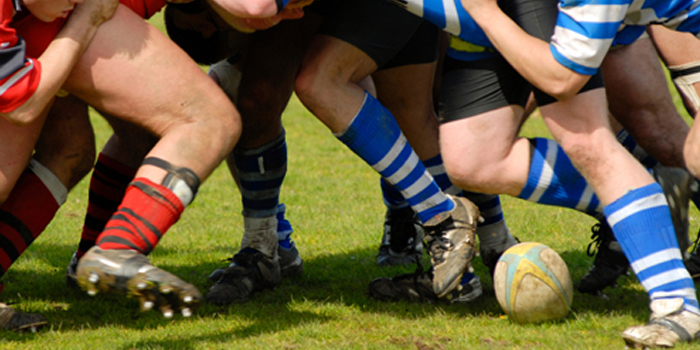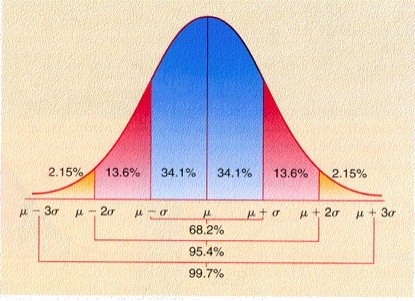
This article actually has it’s roots in a discussion back in 2005, where a colleague and I were attempting to determine what we considered to be the mean exercise for which we could determine loading goals in a program.
We were attempting to ascertain what exercises would be appropriate to look at standards in loading to achieve at different levels of a national rugby program, from internationals down to academy players.
We started by relating that to a statistical bell shaped curve distribution:
By doing so, we attempted to ascertain what the exercise best represents the mean (± 1 standard deviation) that all players could achieve with technically correct form.
Our first task was to consider the movement pattern groupings that would cover our range of exercises and we came up with the following selections. Whether you a fan of the Paul Chek 7 Primal Movement Patterns (squat, lunge, push, pull, twist/rotation, bend, gait) or the Dan John 5 Basic Movement Patterns (loaded carries, squat, hinge, pull, push) or if you want to classify simply by lower body pull/lower body push/upper body push/upper body pull, or categories that you have decided upon work well for you and your program, this approach will work.
After you have had that discussion, you then need to determine what is your mean exercise. More specifically, find out what exercise in each category you think that 68.2% of your group will be able to perform without any issues at all. After that discussion comes the hard decision: which exercise would you select that you consider 13.6% below and 13.6% above the initial group to be able to perform comfortably. Finally, you come to your top and bottom selection of exercises in each category, those which you consider only 2.15% can perform at each end of the curve. This probably isn't clear yet. It will be.
Let us consider one example. Take the movement pattern of the lower body pull and consider the levels of progression and regression from the mean:
This could be misconceived as a leaning to the Olympic lifts as more important than other movements, so you could consider this to be a more appropriate progression/regression scaling:
The decision is yours how you grade the movements that your athletes perform. The other aspect of this is a return to play standard in that every player should be able to perform the mean exercise prior to being considered ready to return to full training and be in a position to be selected to play.
Alternatively, you could look at it as a teaching progression and look at for example the power clean.
I would be really interested in hearing you thoughts on this topic and to see what you come up with as progressions and regressions in relation to a variety of movement patterns.
Is the progression and regression really only related to the amount of weight that you can lift on the major exercises that most program seem to have in common? Maybe the regression and progression is related to training age and the attainment of various standards as measured so that the range is from untrained, novice, intermediate, advanced, elite at a bodyweight of 90kg. One organization suggests the following loads as appropriate in the back squat:
We can also use the bell shaped curve to filter our strength training workouts into three major groups. If you look at the curve and just have three areas, these can correspond to levels of physical readiness or preparedness.
Combining the work original work of Prilepin and the excellent article written by Scott Dixon on Prilepin’s Table for Hypertrophy:
That is a snap shot of the final week of a three week loading cycle. The permutations are endless. Irrespective of the zone a player is working in, they will still be getting an effective workout based around the appropriate loading in relation to intensity.


















I really enjoy your articles. I would love to see some more in depth writing on the regression/progression scales. It makes a ton of sense.
Just a thought, couldn't you put rack pull before trap bar deadlift in the second scale. It would seem the shortened ROM in the rack pull would put it before the TB DL. I think this is a great thing to play with.
Brian